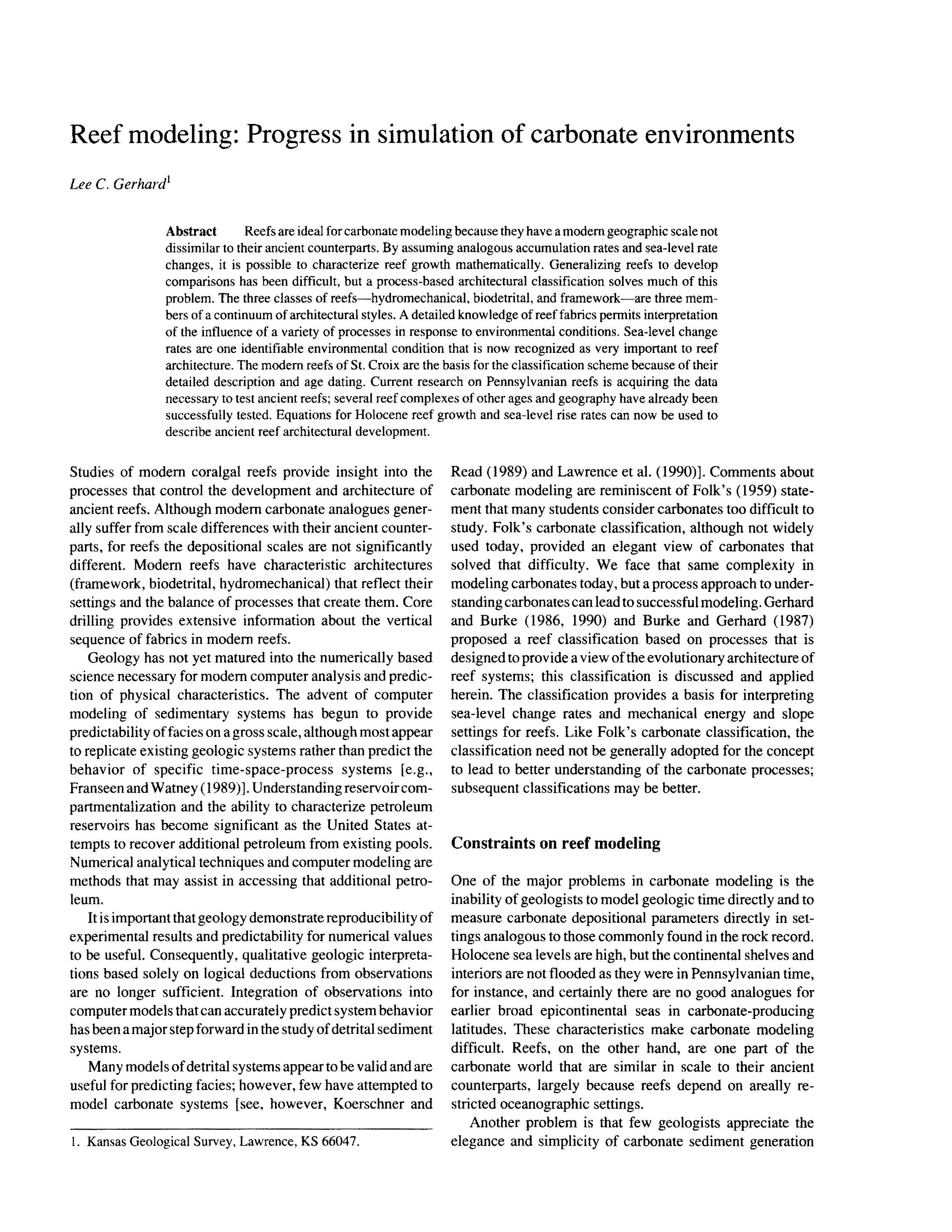Reef modeling: Progress in simulation of carbonate environments
DOI:
https://doi.org/10.17161/kgsbulletin.no.233.20467Abstract
Reefs are ideal for carbonate modeling because they have a modern geographic scale not dissimilar to their ancient counterparts. By assuming analogous accumulation rates and sea-level rate changes, it is possible to characterize reef growth mathematically. Generalizing reefs to develop comparisons has been difficult, but a process-based architectural classification solves much of this problem. The three classes of reefs--hydromechanical, biodetrital, and framework--are three members of a continuum of architectural styles. A detailed knowledge of reef fabrics permits interpretation of the influence of a variety of processes in response to environmental conditions. Sea-level change rates are one identifiable environmental condition that is now recognized as very important to reef architecture. The modern reefs of St. Croix are the basis for the classification scheme because of their detailed description and age dating. Current research on Pennsylvanian reefs is acquiring the data necessary to test ancient reefs; several reef complexes of other ages and geography have already been successfully tested. Equations for Holocene reef growth and sea-level rise rates can now be used to describe ancient reef architectural development.
Downloads

